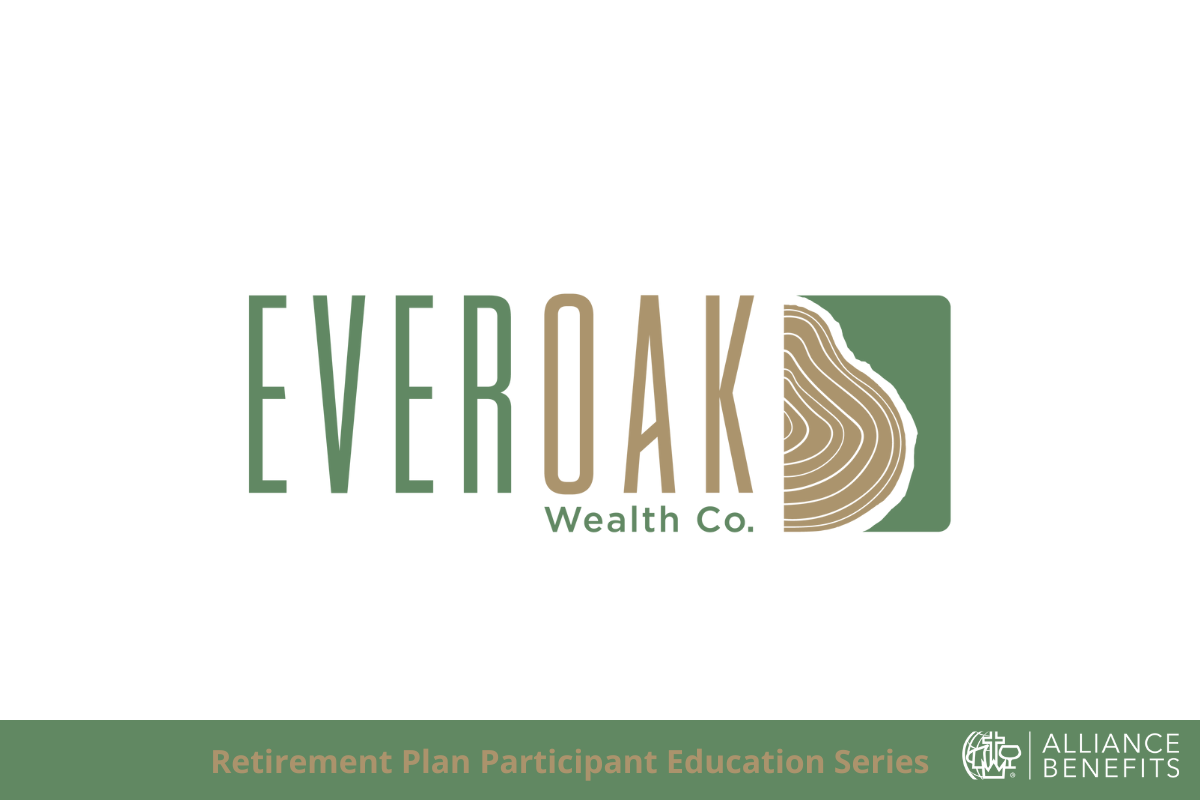I don’t enjoy fortune cookies. Honestly, I’m still trying to figure out how anyone can refer to them as a “cookie.” Maybe they should be called fortune dog biscuits. I also find the idea of taking wisdom from the little piece of paper on the inside as just not very practical. That is…until one crisp fall day about seven years ago.
A long-time client stopped me dead in my tracks – via miniature fortune cookie scroll. As she was handing the fortune to me, I knew immediately what it was. You can tell when you see the size & shape of that tiny piece of paper. As she passed it across the table, I thought to myself, “this is just going to be some cheesy, overused cliché…” However – this fortune was quite different…enlightening even!
It read, “Don’t worry about the stock market. Invest in family.”
For as long as our team here at Steadfast has been providing counsel to our dear clients, we’ve never had someone look directly at us, reflecting on their planning journey, and say, “I wish I would have worried more.” We understand this is an obvious statement. But if it’s so obvious in hindsight, why is it so hard to do in foresight?
Did you know that we all speak to ourselves at around 1300 words per minute?1 This inner dialogue is better known as “self-talk.” Considering that we only verbally speak at 150-200 words per minute1, you can see just how much influence the things we “think on” have over our eventual actions. An ancient proverb states, “Be careful how you think, your life is shaped by your thoughts.” Proverbs 4:23.
From the very beginning of your 1st dollar’s investment journey, all the way to its eventual transition to your family and loved ones, you will have to come face to face with many thoughts that are only there to derail your strategy through the medium of “worry.” This is a fact. In reality, there is no strategy to “not worry.” You might as well say… “don’t be human.” So, what weapons do we have to combat this? Surely something stronger than a fortune cookie…
The first thing we can do is execute our plan regardless of the investment, political, or cultural climate. When times are bad, we become increasingly aware of our lack of control. None of us have ever had control of what happens in the future anyway, but that fact is much less obvious when things are rosy, and everything is heading in an upward trajectory. When the “good times” are happening, our perception is that we’re on track. When the good times are in the rearview mirror, our minds can quickly shift to worry and the fear that we must do something different.
A few years ago, our team attended a presentation by a prominent behavioral psychologist who said that the one underlying condition all his patients had in common was their intense desire to control the very things outside their control. Think about that statement for a moment. The only thing we truly have control over is our own inputs. When times are challenging, we must do our best to set aside our emotions and refocus on those inputs that helped create our financial plan in the first place, based on logic and reason. In doing so, we feel more disciplined and confident, especially in the face of those future unknowns that are outside of our control.
Sports leadership expert Dr. Kevin Elko says, “it’s not what yourself tells you, it’s what you tell yourself.” When we stay committed to a sound strategy in the midst of turbulent waters, we are telling ourselves that it’s okay to be concerned as the waves crash over the bow – but it’s not okay to jump ship. The plan was created for times like this. Focus only on the things you can control and trust that the outputs will eventually reward your inputs.
The second thing we do is that we increase our patience threshold. That dreaded “p” word. For all the great investors of our time, it is perhaps the single most important word related to their success. History lessons are important, and no one revisits valuable lessons learned better than investment guru Nick Murray. Here is an excerpt from his recent newsletter that we wanted to share.
The record will show that the single worst day to invest in the S&P 500 since the end of the Second World War was Tuesday, October 9, 2007, on which date the Index closed at a new record high of 1,565. Almost immediately, one might have begun to hear the first faint rumblings of what—a full year later—would explode into the Global Financial Crisis.
The equity market certainly did hear said rumblings, and began a long, slow decline the following day. That decline accelerated into a historic crash in mid-September 2008, when the Lehman Brothers bankruptcy filing precipitated a global financial collapse and market panic. The Index didn’t stop cratering until the following March 9, at a level of 677.
The net effect of all this on the S&P 500 was that in the 17 months (to the day!) October 9, 2007, to March 9, 2009, it declined 57%—quite a bit more than it had at any time since the 1930s. Indeed, it wouldn’t get back to the level at which you bought it until 2013.
Now, as you read this essay, we are still about a month shy of the 14th anniversary of that fateful market top. Along the way, in addition to the ensuing 57% drop, the S&P 500 has experienced almost 20% declines twice—in 2011 and 2018— as well as last year’s 34% (in 33 days) COVID Crash.
With all of that statistical evidence of serial disaster in hand, we may now proceed to address the question:
“What if I’d invested my whole net worth in the S&P 500 at the top on October 9, 2007, and just hung on? What has been the average annual compound return since that spectacularly ill-fated mistake?”
The answer, as difficult as it may be to believe at first, is 10%. Let me say that again: the average annual compound return of the S&P 500 from the market top in October 2007 through this past month was 10%—equal to the market’s long-term average. As Casey Stengel always said, “You could look it up.” I suppose if you’re a millennial—trading options, or meme stocks, or (heaven forbid) Bitcoin. An interval of 14 years might seem like a period of geologic time (akin, perhaps, to the Jurassic), and cause your eyes to glaze over. You may run along now; I’m going to hang in here and chat with the grownups for a bit.2
I was speaking with a good friend the other day who was dealing with a challenge, and he spoke a common refrain: “I’m just taking it a day at a time.” I’ve learned that this widely accepted phrase can lead to some of life’s worst decisions. We need to make decisions based on a much longer timeline. If we converted this saying to the investment world, it would read more like this “we’re just taking it a decade at a time.” You will be asked to give more patience than you ever thought possible if you are to do this well and reap the reward you set out to achieve.
Finally, and the part we love most about the fortune cookie message is the idea to invest in family. Once you have addressed the first and second items above, redirect that wasted “worry” energy into things in your life that matter. Things that you’ll look back on one day to find worthy of your efforts, laughs, and tears. Investing your valuable time in agonizing over the inevitable negative quarterly investment statement, ugly current global event headlines, or the endless mental debate about your worst-case scenario fears will never get you to where you ultimately want to be.
Markets are unpredictable – and out of your control. Times have been good recently, but shifts happen without warning. Who knows…historically, the S&P 500 goes through a market decline of 14.3% at some point during every calendar year.2 This hasn’t happened in 19 months.
We’re not making predictions but rather drawing your attention to the inevitable. And, when the next market decline does happen, it’s not to be interpreted as though your plan and strategy stopped working. They will only stop working if you do. You won’t need to hear from us when this occurs, you’ll already know. This will be your indication to remain disciplined, multiply your patience, and do something else that really matters. We don’t need anything to predict our fortune, we simply need to stop trying to control the things we can’t and focus our efforts on that which we can. Don’t worry about the stock market. Invest in family.
Joel Malick currently maintains the Accredited Investment Fiduciary (AIF®) and Accredited Wealth Management Advisor (AWMA®) designations. Joel and his team at Steadfast Wealth Co. recognize that running this race for the long term is one of the greatest challenges you’ll face in your lifetime. Thus, they combine critical planning and investment strategies with real-life perspectives. Their consultation is provided at no additional cost to Alliance 403(b) Retirement Plan participants.
- www.lightsource.com/ministry/daily-hope/devotionals/daily-hope-with- rick-warren/its-time-to-eliminate-negative-self-talk-daily-hope-with-rick- warren-may-11-2017-11773027.html
- Nick Murray September 2021 Newsletter
This material represents an assessment of the market environment at a specific point in time and is not intended to be a forecast for future events, or a guarantee of future results.
The Standard & Poor’s 500 Index (S&P 500) is an unmanaged group of securities considered to be representative of the stock market in general. Please keep in mind that one cannot invest directly in an index.
This information should not be relied upon by the reader as research or investment advice regarding any funds or stocks in particular, nor should it be construed as a recommendation to purchase or sell a security. Past
performance is no guarantee of future results. Investments will fluctuate and when redeemed may be worth more or less than when originally invested.
Securities and Investment Advisory services offered through Securian Financial Services Inc. member FINRA/SIPC. Steadfast Wealth Co. is independently owned and operated. 7222 Commerce Center Dr Suite 108, Colorado Springs, CO 80919. 3795630 DOFU 10-2021






